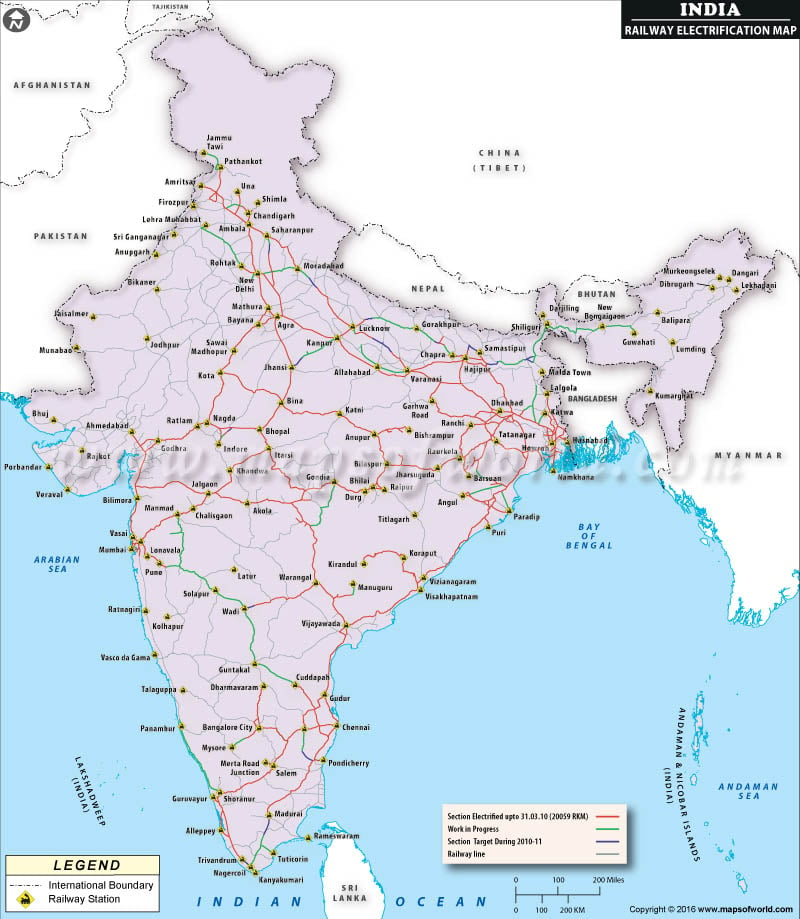Indian Railways (IR), operated under the Ministry of Railways, is one of the world’s longest railway networks. It includes roughly 115,000 kilometers (71,000 miles) of track and 7,112 stations along a route of 67,312 km (41,826 mi). IR operates both long-distance and suburban trains on the broad, meter, and narrow gauge tracks.
As of March 2016, about 41.59% (27,999 km or 17,398 mi) of the total route length has been electrified. Nearly all electrified sections use 25,000 Volt AC traction. Eastern Railway and South Eastern Railway, both headquartered in Kolkata, have 1501 and 2313 km of electric track respectively. North Central Railway features 1757 km of track and is headquartered in Allahabad. West Central Railway (Jabalpur) has 1590 miles whereas, South Western Railway (Hubli) has 256 km of electric track.
Due to the Thar Desert and the Great Rann of Kutch, railway tracks in Western India are relatively less electrified. The lack of infrastructure in Northeast India and Himalayan states remains an obstacle to the expansion of Indian Railways. Due to the flat landscape and terrain, Central India has the most densely formed electrified train route. Most of the major cities and urban areas in India lie on the electrified route to provide better public transport.
